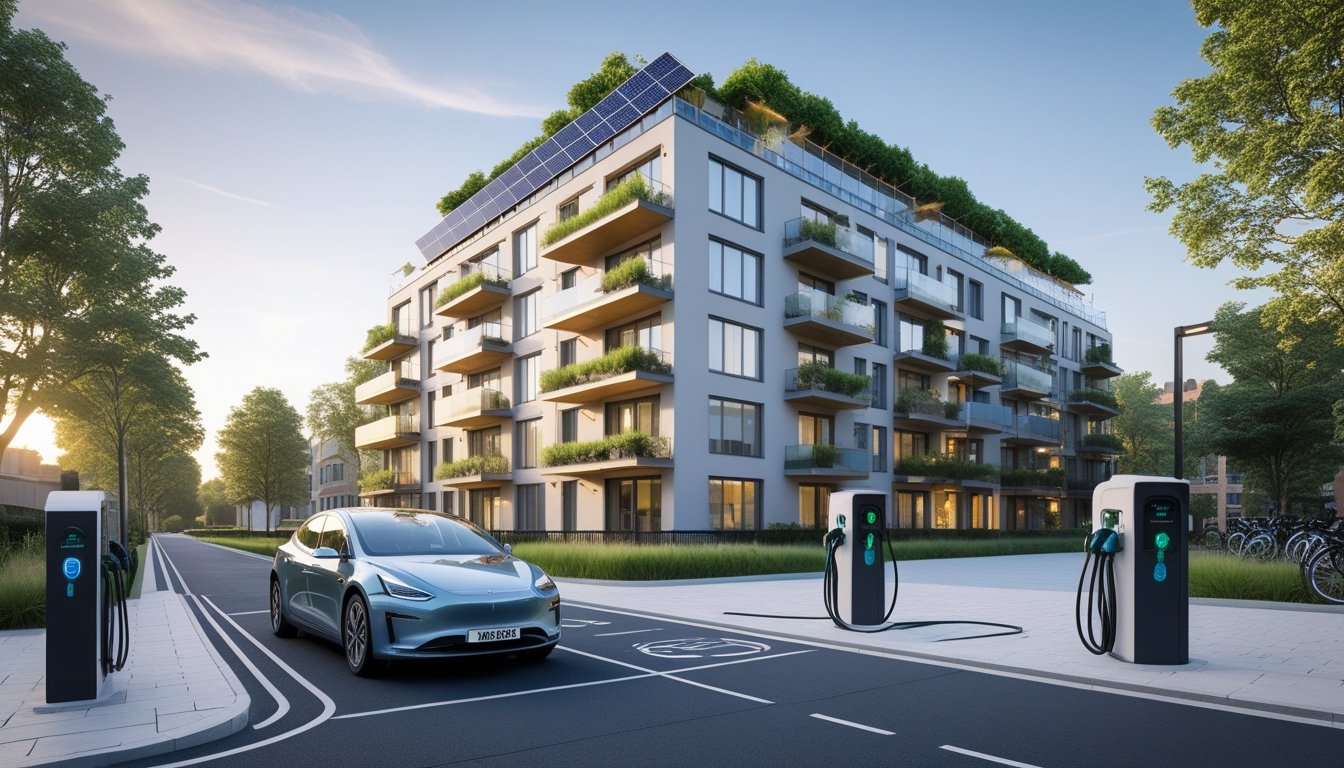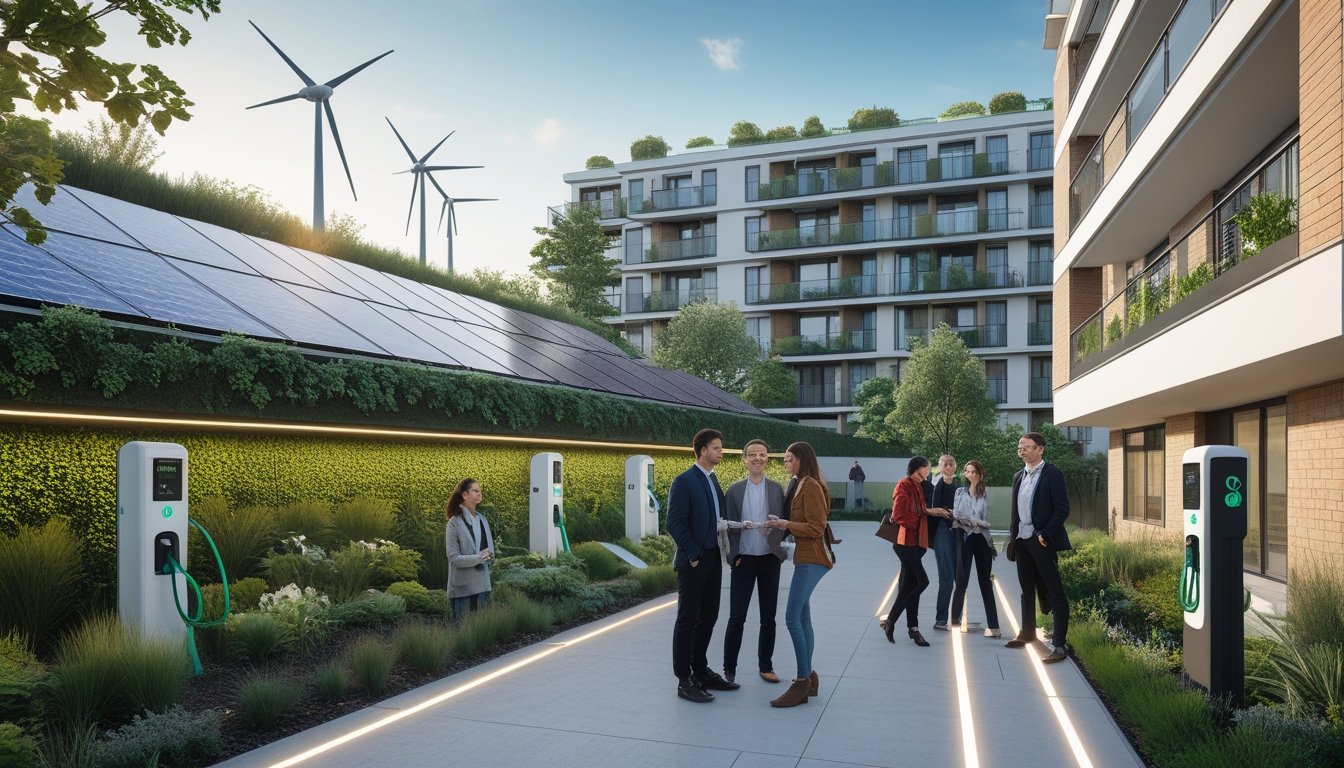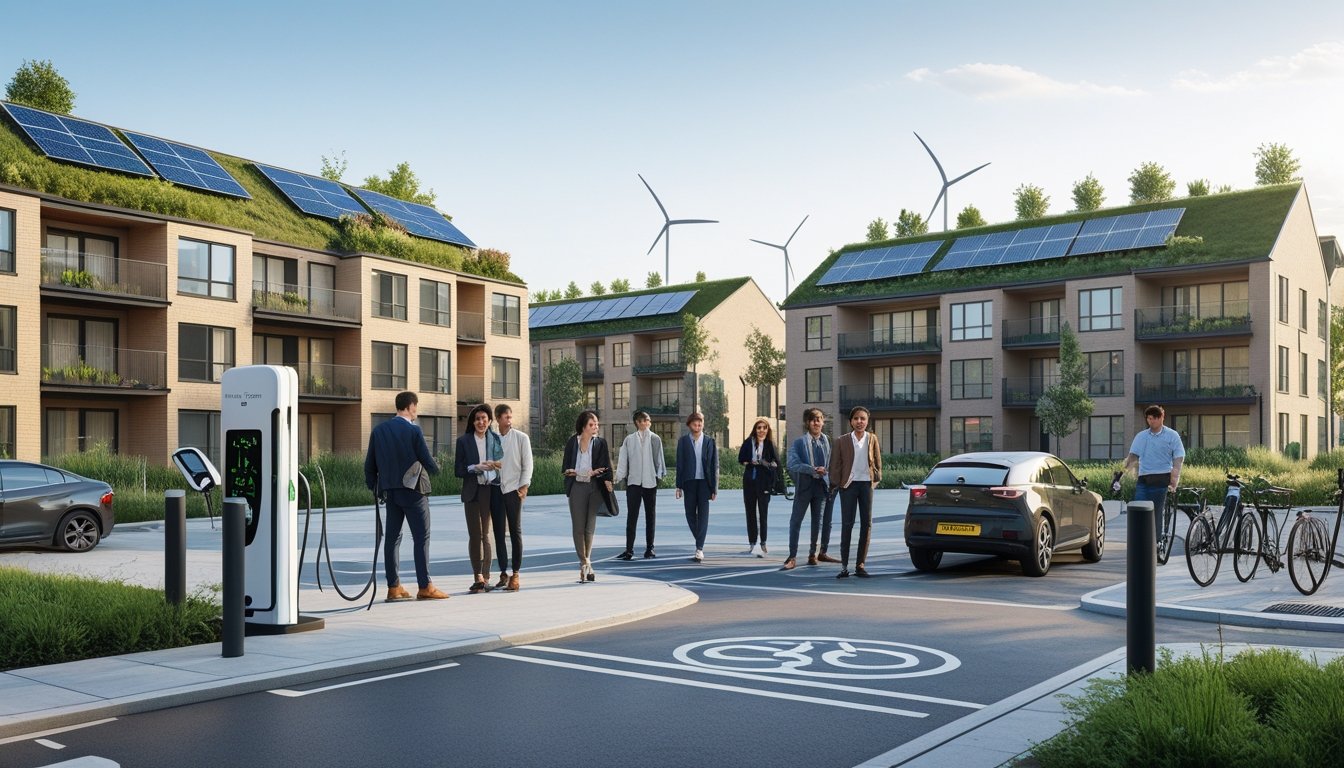Late updated: 25 Jul 2025 15:07
Written by: Eleanor Hartman
Sustainable Energy Solutions For Urban UK Apartments: Innovative Strategies for a Greener Future
In the bustling cities of the UK, sustainable energy solutions for urban apartments are not just a future aspiration; they are an immediate necessity. As urban areas continue to develop, our focus turns towards integrating energy-efficient systems that align with sustainability goals and reduce our carbon footprint. One promising solution is the implementation of compact solar panels and small-scale wind turbines, which help utilise renewable energy sources even in dense areas.

With growing concerns over climate change, the desire for eco-friendly living options has surged. Urban apartments can leverage innovative energy solutions such as advanced storage systems and hydrogen technologies to support sustainable living practices. These technologies not only make apartments more attractive to eco-conscious residents but also contribute to achieving the UK's ambitious net zero targets. By focusing on energy solutions that are practical and easily integrated, we can collectively enhance urban living environments.
The transition to sustainable energy in urban apartments also involves policy strategies and urban design optimisation. Collaboration with policymakers and urban planners ensures that these solutions are efficient and scalable. As we explore practical implementations, it becomes evident that a combined effort is crucial for transforming our urban landscapes into sustainable havens.
Key Takeaways
- Implement solar and wind technologies for sustainability in cities.
- Use energy-efficient systems to reduce carbon footprints in urban homes.
- Urban planning and policies are essential for achieving energy goals.
Key Sustainable Energy Solutions For Urban UK Apartments

Urban UK apartments are increasingly adopting sustainable energy solutions to address environmental challenges and promote energy efficiency. Our focus is on renewable energy integration, improving building energy efficiency, and implementing low-carbon heating and cooling systems.
Renewable Energy Integration in Apartment Blocks
Integrating renewable energy sources into apartment buildings is central to achieving sustainability. Solar panels often top the list of viable options, especially for roofs and communal areas. Technological advancements have enhanced their efficiency, making them more attractive.
Wind turbines, although less common, can also be considered, especially for taller buildings with roof space. These solutions help reduce carbon emissions and support the UK's net-zero targets. Collaboration with local authorities and incentives can make adoption easier. It's crucial to consult specialists for tailored solutions.
Energy Efficiency Measures for Urban Dwellings
Energy efficiency is another core component in reducing apartment energy consumption. Simple measures, like installing double-glazed windows and insulated walls, can lead to significant energy savings. LED lighting and energy-efficient appliances also contribute to lower utility bills and reduced carbon footprints.
Smart technologies such as thermostats and energy-monitoring systems allow residents to track their usage. This empowers them to make informed choices about reducing their energy consumption. These measures align with the goals set out by the Intergovernmental Panel on Climate Change (IPCC), promoting reduced emissions.
Low-Carbon Heating and Cooling Systems
Heating and cooling account for substantial energy use in apartments. Embracing low-carbon solutions like heat pumps can significantly lower emissions. These systems extract heat from the environment and efficiently distribute it inside the building, making them suitable for urban settings.
District heating networks offer another promising solution. These centralised systems can efficiently supply heat to multiple apartments, reducing the need for separate heating systems. Cooling is also essential, and advanced systems utilise renewable energy to power air-conditioning units.
Adopting these systems contributes to climate change mitigation by significantly lowering the carbon intensity of our residential environments. Working closely with energy experts ensures that the chosen systems meet both individual and community needs.
Urban Design and Policy Strategies for Sustainability
Addressing the challenges of climate change and achieving net-zero emissions requires innovative urban design and policy strategies. By focusing on sustainable solutions, we can retrofit existing structures, implement renewable energy systems, and improve urban mobility infrastructure.
Planning For Net Zero in UK Cities
As part of our commitment to reducing emissions, planning for net-zero in UK cities is critical. This involves integrating renewable energy sources into urban planning, such as solar panels on rooftops and wind turbines in suitable locations. Policymakers and city planners must collaborate closely to ensure regulations support green building practices and prioritise carbon reduction.
Design strategies can benefit from Whole Systems Modelling Approach. This method helps us explore the effects of different operational strategies and policy options on urban energy systems. We must focus on minimising fossil fuel dependency, enhancing energy efficiency, and promoting sustainable land use.
Retrofitting and Upgrading Existing Apartments
Retrofitting is vital for improving energy efficiency in older apartment buildings. By upgrading insulation, windows, and heating systems, we can significantly reduce energy consumption. Implementing smart technologies like energy-efficient lighting and smart meters fosters better energy management and reduces the carbon footprint.
Financial incentives play a role in encouraging retrofitting. Government grants and subsidies can ease the financial burden on homeowners and landlords, encouraging widespread adoption of these practices. Retrofitted apartments not only help in tackling climate change but also improve indoor comfort and reduce utility costs.
Sustainable Transport and Community Infrastructure
Developing sustainable transport systems is essential for creating liveable cities. Promoting public transport, cycling, and walking can cut emissions significantly. Introducing electric vehicle charging points and expanding public transport networks are critical steps in this direction.
Community infrastructure improvements go hand-in-hand with sustainable transport solutions. Green spaces, pedestrian-friendly pathways, and eco-friendly buildings create healthier urban environments. Encouraging community participation in planning creates more inclusive spaces, ensuring that the needs of residents are front and centre.
In summary, strategic urban design and policy measures form the backbone of sustainable city development. Through coordinated efforts and smart planning, we can create cities that not only meet the challenges posed by climate change but thrive in a sustainable future.
Frequently Asked Questions

In addressing sustainable energy solutions for urban UK apartments, several practical considerations come to the fore. We explore cost-effective upgrades, the potential for resident participation in renewable schemes, and the importance of cutting-edge technologies, all essential for enhancing energy efficiency and reducing carbon footprints.
What are the most cost-effective sustainable energy upgrades for flats in city centres?
Upgrading to energy-efficient LED lighting and modernising heating systems with smart thermostats can be impactful. Retrofitting windows to minimise heat loss and adding energy-efficient appliances can also cut costs. These small changes often lead to significant savings on energy bills.
How can residents in urban apartments participate in renewable energy schemes?
Residents can benefit from green energy tariffs offered by suppliers committed to sourcing energy from renewables. Engaging in community solar initiatives allows apartment dwellers to collectively invest in solar panels, capturing renewable energy benefits without individual installations.
What is the role of insulation in reducing energy consumption in high-density housing?
Proper insulation reduces the need for heating and cooling, which can make up a large portion of energy usage. High-quality insulation in walls, roofs, and floors, alongside double-glazing, significantly lowers energy consumption, thus contributing to sustainability in urban environments.
What are the regulatory considerations for installing solar panels in urban flats?
Before installation, one needs to consider planning permissions and building regulations, which vary across local councils. It is crucial to ensure the structural integrity of rooftops and obtain approval from flat owners or committees, particularly in listed buildings or conservation areas.
How can energy-efficient appliances contribute to sustainability in apartment living?
Utilising appliances with high energy-efficiency ratings reduces electricity demand, leading to lower consumption and savings. Investing in products carrying labels like the European Energy Label aids in selecting appliances that decrease overall energy use in flats.
What innovative technologies are emerging to assist with energy conservation in multi-unit dwellings?
Smart home technologies that automate energy use, such as smart meters and energy management systems, are revolutionising efficiency in apartments. Also, developments in heat pump technology and battery storage systems are enhancing renewable energy use and conservation in multi-unit housing.